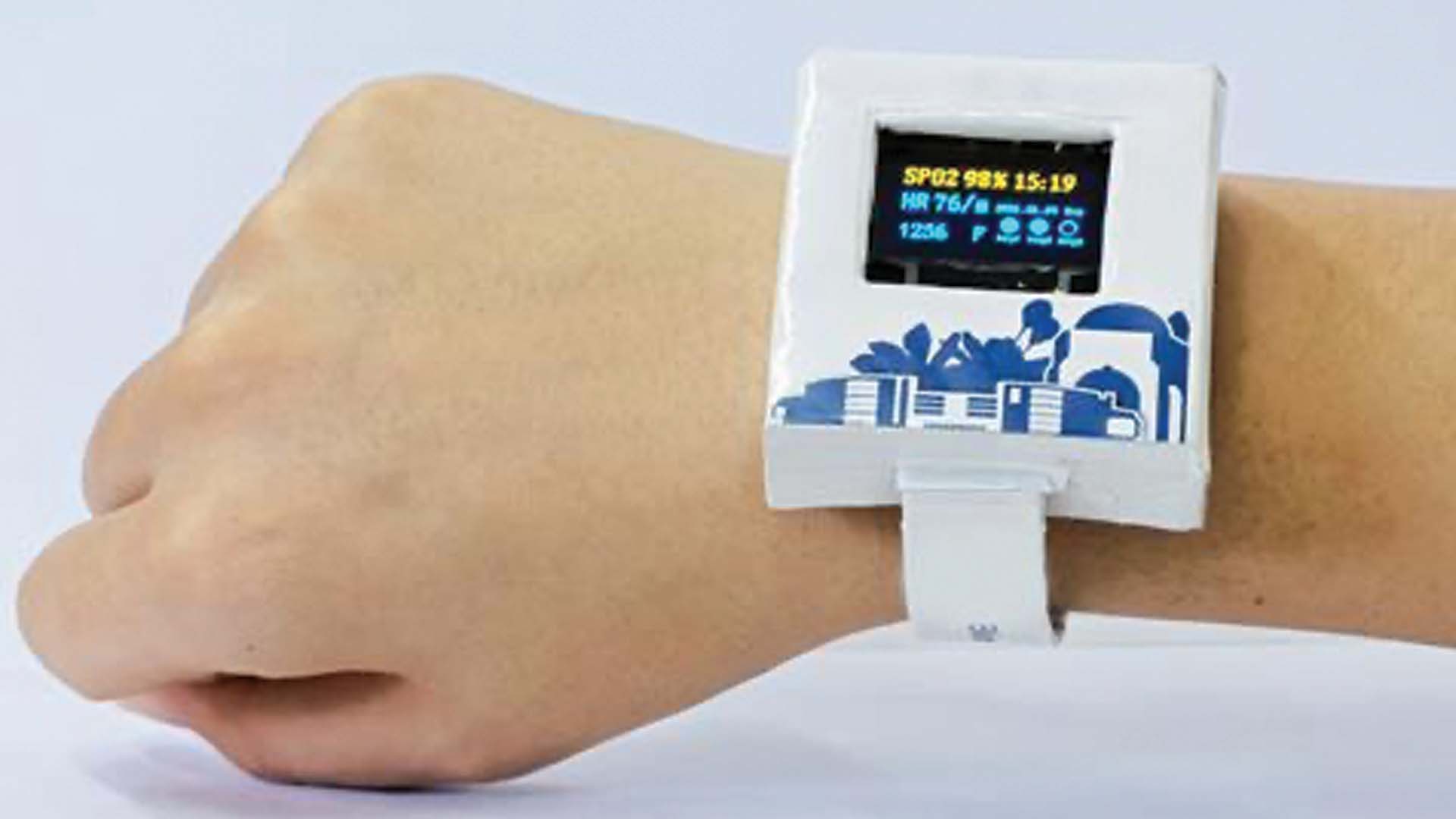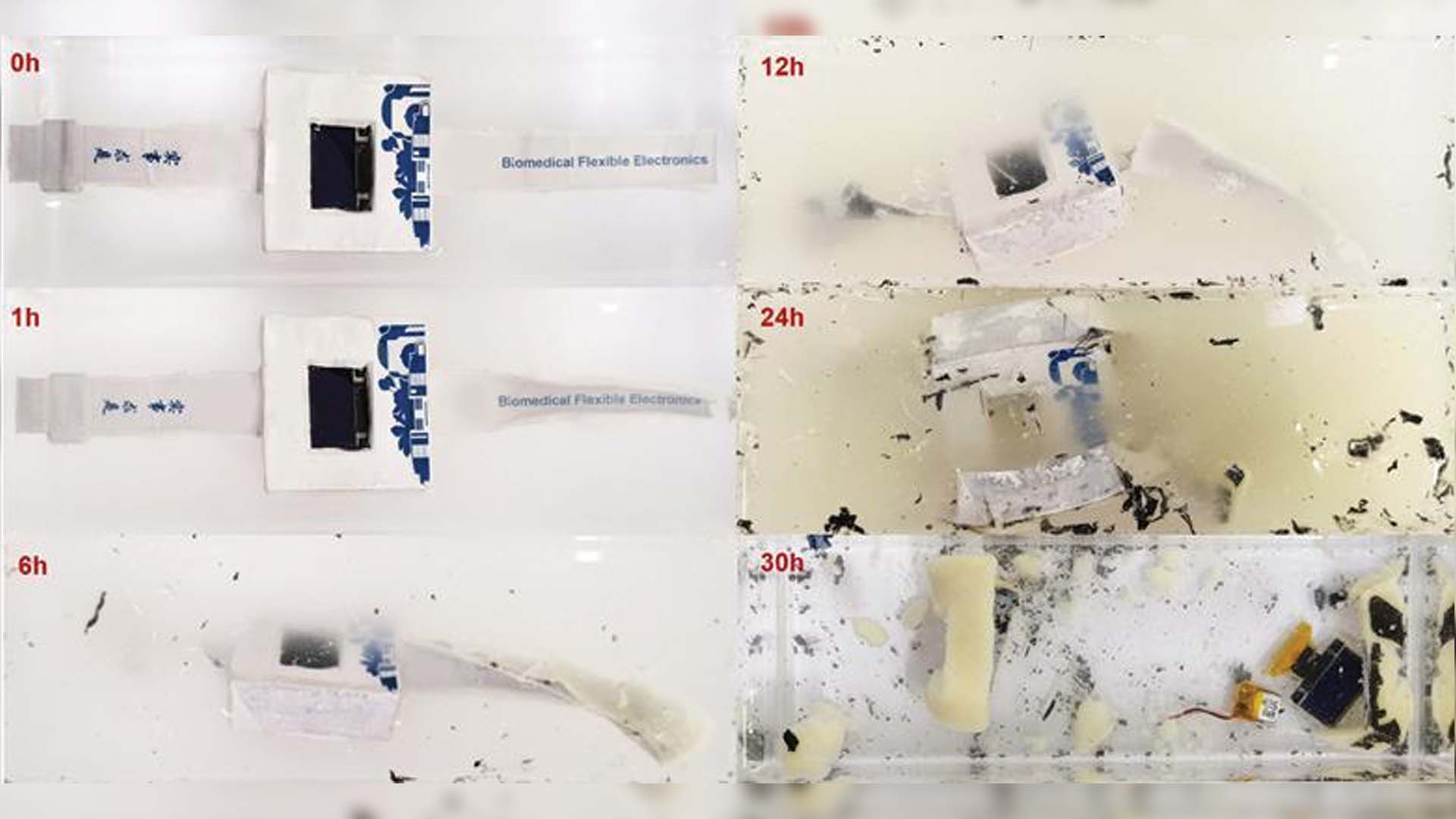Scientists from Tianjin University in China designed a prototype smartwatch that disintegrates when it is submerged in water. When the circuits were demonstrated in a prototype functional dissolvable smartwatch, the watch dissolved within 40 hours.

This technology was made to address and ameliorate the current challenge of recycling small electronics. The fast pace of technology innovations and the planned obsolescence of our electronics result in approximately 50 million tons of electronic waste per year. Furthermore, only 2% of e-waste is recycled material, yet it creates 70% of the toxic waste entering the landfill.
While there are many electronic recycling programs in operation such as Regency Technologies, smaller consumer electronics are especially difficult to recycle because their parts must be salvaged by hand, not by a machine. Additionally, some of the steps to process these smaller electronics such as open burning and acid leaching can cause health issues and environmental pollution. Dissolvable devices that can break apart when needed solve these problems.
This dissolvable smartwatch is possible because of the researchers’ development of two-metal nanocomposites. The zinc nanocomposite helps the circuits dissolve, and the silver nanowires make them highly conductive so they can power larger technology. In order to make the actual watch, they screen-printed the metallic solution onto pieces of polyvinyl alcohol, a polymer that degrades in water. The circuits were then solidified by adding droplets of water that facilitate chemical reactions, allowing them to evaporate. In the final creation, the smartwatch had multiple nanocomposite-printed circuit boards inside a 3D printed polyvinyl alcohol case.

Photo Credit: American Chemical Society
The smartwatch accurately measured a person’s heart rate, blood oxygen levels, and step count; the information was then sent to a cellphone app via Bluetooth. The watch withstood sweat, but the case and circuits dissolved completely within 40 hours. The only things not dissolved were the watch’s components, such as an organic light-emitting diode (OLED) screen and the resistors and capacitors that were integrated into the circuits.
The researchers believe that their two-metal nanocomposites can be used to produce transient devices with the ability to match the same performance as commercial models. This dissolvable smartwatch marks a step into solving the worldwide challenges of small electronics waste.
To see how electronics get recycled, stream Tomorrow World Today’s “The Science Behind Electronics Recycling” on on SCIGo and Discovery GO!




